How to Build a Logistics App: a Step-by-Step Guide
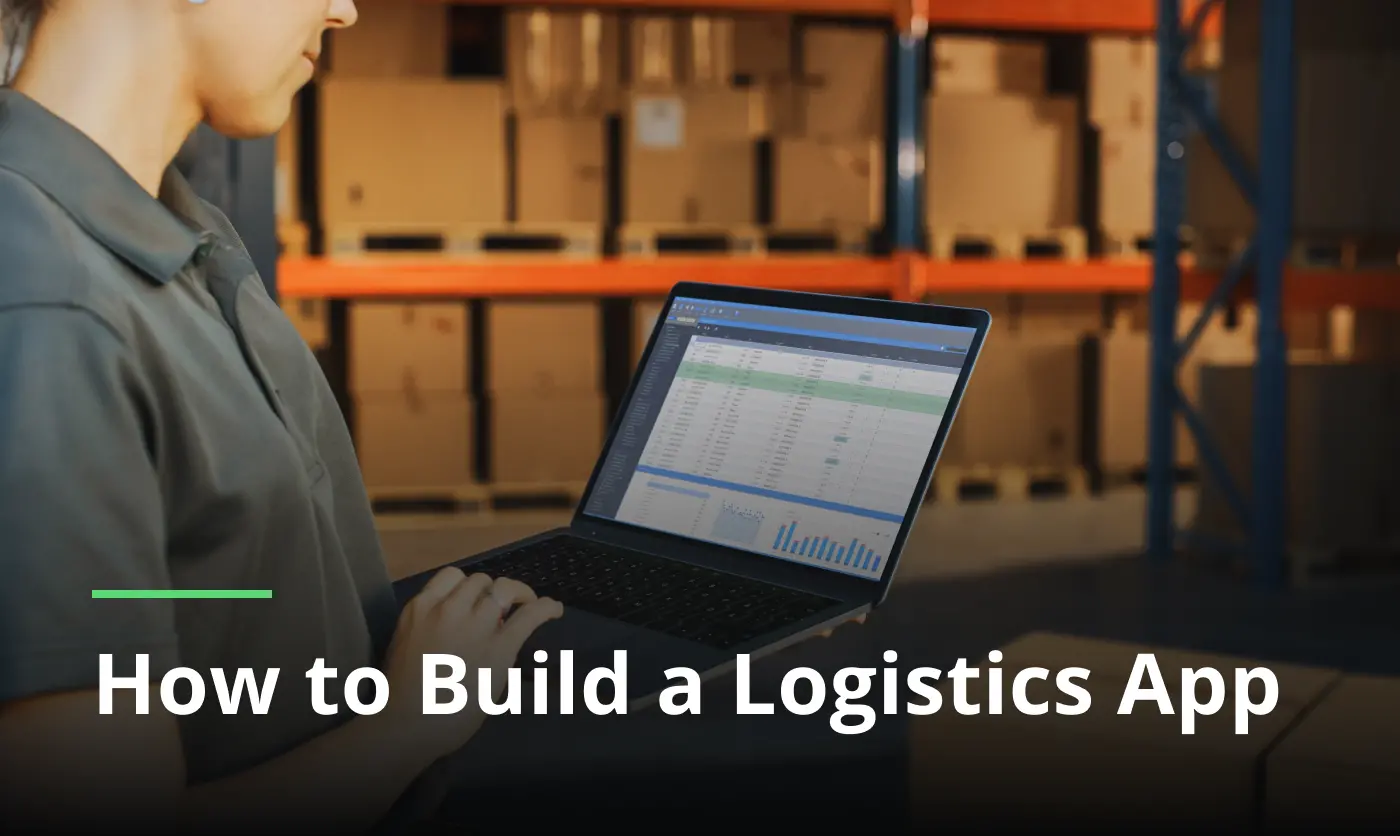
Running through logistics app development is a reasonable option for business owners and representatives who would like to automate the supply chain, reduce operational costs, and enhance overall efficiency. This review will give you all the vital answers, from order management to automated invoicing and transport nuances for both internal and online platforms.
If the decision to create a logistics app is all Greek to you or you would like to refresh your knowledge, this article is a helping hand. You are able to leverage our 10+ years of experience as a software company for the logistic industry, and familiarize yourself with how-to-build steps, essential features, technologies, cost, and more.
The logistic app development seems like a daunting process, but stay tuned, and we will explain all the nitty-gritty details in this brief yet comprehensive guide. Let’s delve deeper into the topic.
What is a logistics application?
As a transportation business owner, you would definitely like to facilitate your management processes and optimize your supply chain to increase revenue. Moreover, company-tailored solutions are aimed at concrete needs, being a helpful tool for eCommerce stores, fleet companies, suppliers, retailers, and wholesalers.
For example, Amazon enhanced real-time tracking and cut operations costs, and on the other side, FedEx applied automation for booking and tracking systems to reduce the time needed for its customers, gaining more users and income.
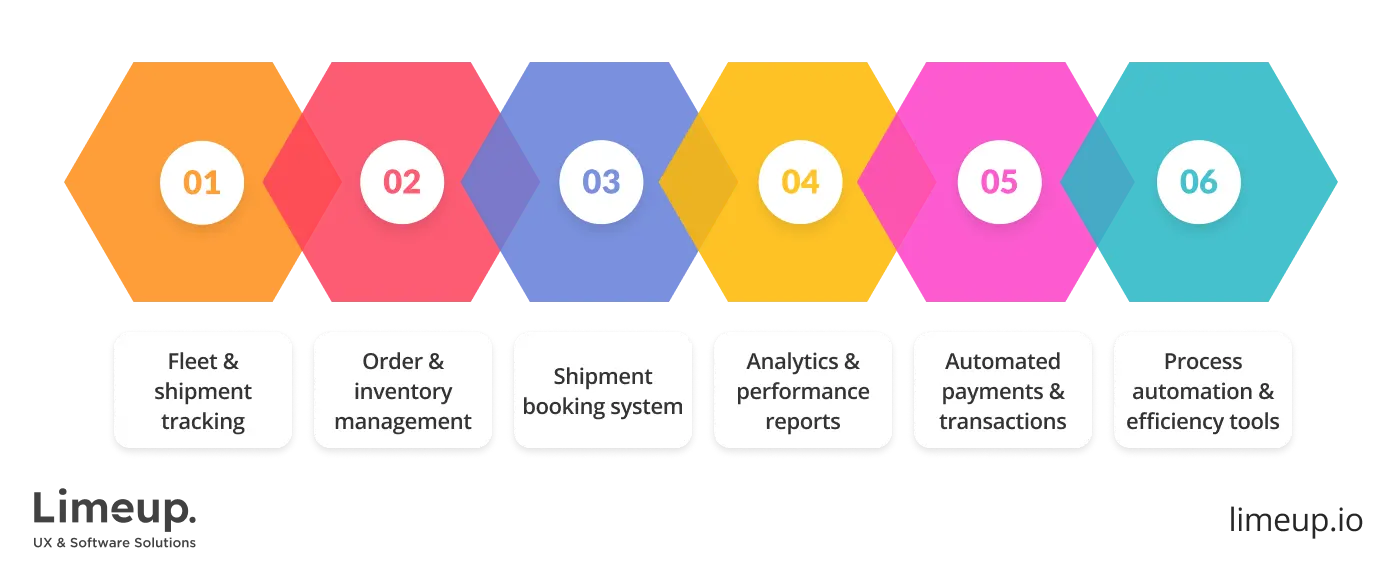
With the usage of transport and logistics app development, you will build a mobile platform that will lend a helping hand with fleet tracking, order control, inventory, analytics, automated payments, and more. If you are thinking about a project that will be used online by customers and providers, you can create one for shipment booking, live tracking, etc.
If you want to apply for custom application development, you are able to choose between off-the-shelf and developed from the ground up, and the latter is the topic of today’s material. Stay tuned, and we will consider the how-to creation process in detail.
What are the 5 steps of logistics app development?
Moffat Machingura, one of the bestselling authors, said, “The first step is the hardest in every journey of dreams,” and we would like to add that it’s unrealistic to do one when you don’t even know what it stands for.
Therefore, our specialists decided to gather experience from our veteran coders and designers to explore the process of mobile app development for logistics from defining your goals to testing. Let’s define how to overcome tech challenges and make such an investment profitable through 5 core stages.

— Step 1. Establish your purpose.
To put it simply, your idea definitely didn’t come out of nowhere — you have something in mind that can be built or improved, and it’s advisable to form it verbally across your representatives/departments and write it down.
Such a blueprint has to contain:
- target audience analysis with their needs, personas, journey, pain points, etc.,
- market research of the rapidly changing transport industry,
- features that will be beneficial to business (we will consider them later),
- timeframes to catch up to your objectives and allocate resources.
Before building a logistics app you can even create documentation to avoid rework. Referring to statistics, there are ~1.54M of apps on the App Store only, so you would definitely like to ensure your project will be in demand, without the need to start over (if you choose to build an online platform).
— Step 2. Decide on tech stack and UI/UX design.
Front-end, back-end, databases, cloud development, tools for testing — you have a lot on your plate, so here we will provide an overview of the nuances. The selection mainly depends on native or cross-platform creation (to put it simply, do you want it to be available on Android and iOS, or only one of them) and desired performance.
There are numerous programming languages for logistics mobile app development, we will list the one used by our programmers the most:
- iOS: Swift, Objective C, SwiftUI.
- Android: Kotlin, Java, Graddle, JetPack.
- Cross-platform: React Native, Flutter, JavaScript.
Also, principal points of UI and UX have to be considered as you create this for your end-users who require simplicity, fast download, seamless navigation, intuitive buttons and usability across various devices.
— Step 3. Code your solution and test, test, test.
Here, you will create server-side logic through a back-end and front-end, which stands for interface components, visual effects, in other words, all that the user will see using your program. You have to consider API integration as well, especially if you determine payment features in the step of this process.
Talking about tests in logistics app development, there are a bunch of them, from performance to security, and we can say every one of them is vital to ensure your application performs well, it’s protected from breaches and unauthorized access and can be visible for various mobile and tablet devices.
— Step 4. Go live (on-premises or global).
Whether you would like to optimize in-house operations or go viral for the public, you need to post your application for downloading on a private cloud vs. worldwide access. There are a few differences, for example, in security focus and integrations, so we recommend calculating these specifications.
For instance, you are able to receive feedback from a local country or a group of people and then decide when and how to scale up your deployment.
— Step 5. Support and update.
First of all, this stage depends on the scalability of your application since mostly you will upgrade security patches but when needed, it’s also vital to maintain bugs and compliances, compatibility through integrations with CRM or ERP, and more.
Customer-based platforms have different purposes and requirements, so that you can keep your hand on the pulse of hacking prevention, client online 24/7 support, and failure prevention. It’s accessible if you cooperate with a transport and logistics app development company, which offers full-scale services; in other cases, you can do it on your own.
This part of our material can seem like a complex one, and to be honest, it’s not a walk in the park since you have to take into consideration tech challenges, serving a lot of users simultaneously, deal with scalability spikes, calculate human error and impact, train employees, fight with legal regulations.
If you are not a tech guru with years of experience you bring into the play, you are able to hire app developers and delegate all the aspects of your development. Further, we will take a look at functionality, as we promised in this topic.
What are the key features needed to build a logistics app?
We have noted that the core purpose depends on whether you are creating a solution for your usage or going global for customers, carriers and shippers, so here we will consider the vital functions that are aimed at meeting users’ expectations, business efficiency, and gaining a competitive advantage.
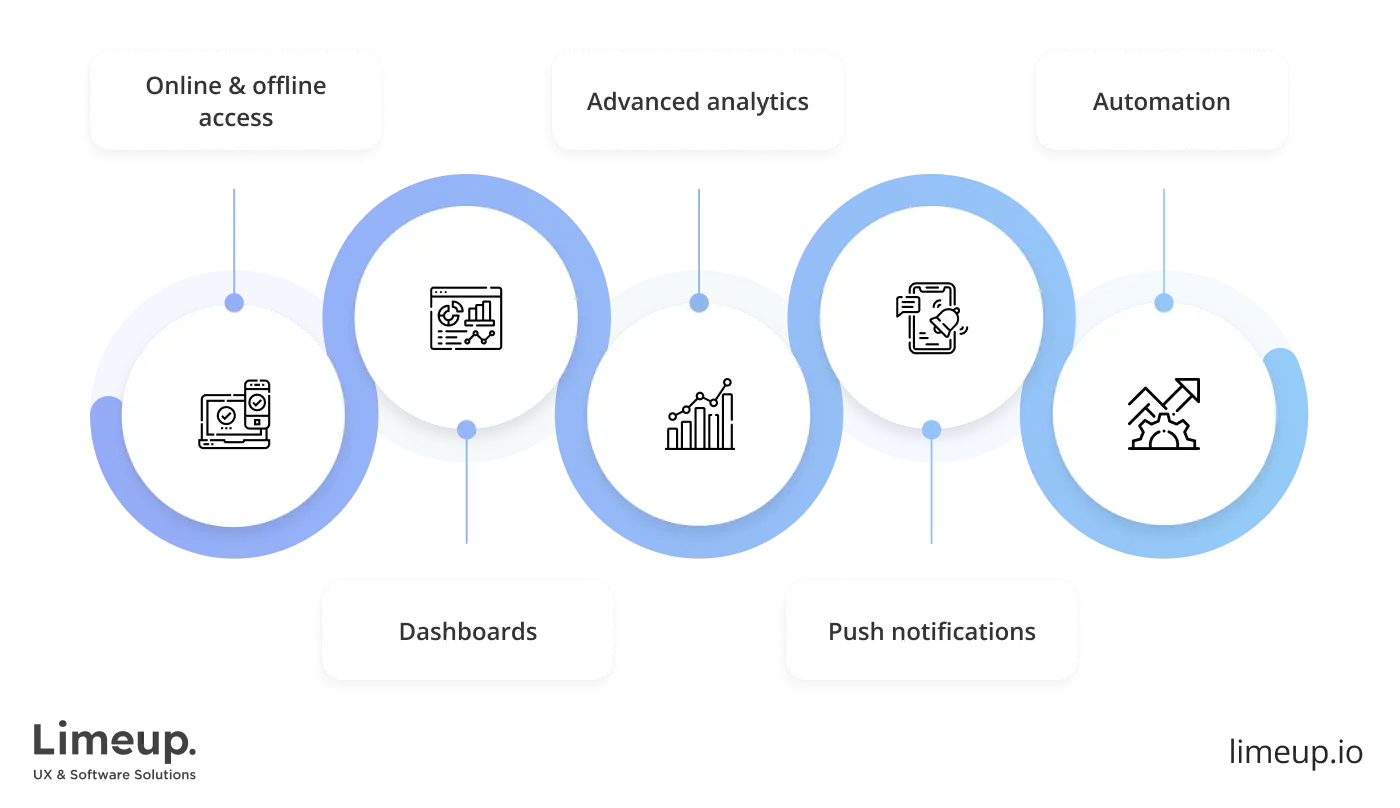
This list is provided to the research from our experts in an app development company for logistics and their background across the projects coders delivered:
-
Online & offline access. As nothing is stable in this life — even the Internet connection — it’s advisable to allow users to browse and enter data offline, and then sync it when the Wi-Fi is up. Let’s say that your drivers are driving far away, through forests or tunnels but within your custom logistics services app development of offline features, they can update location and details.
Emergencies also take place here, storing information about shipment location, delivery confirmation, updating inventory, and more.
-
Dashboards. If you look through the case studies from vendors, there will be such admin panels with vital data that has to be a) posted in real time and b) contain graphs, visualizations, and more. It will be useful for your managers to view order details from “pending” to “delivered” status, analyze delays, track expenses and incomes.
If you are building a platform for your buyers, they don’t need to jump through hoops in order to view the delivery progress, as an example. A team of tech-savvy logistics app developers will create a dashboard that will be aimed at putting out fires in any case.
-
Advanced analytics. We bear in mind that previously mentioned around-the-clock tracking, here we would like to add that analysis will help you to get to the bottom of issues and trends. Such toolkits can be run on AI or machine learning power so that metrics are always up-to-date and ensure endless improvements for your business.
AI-powered suggestions help in the decision-making process, for example, if you are running an eCommerce store, and need to predict sales and workload for Christmas or other global holidays. Simultaneously, it will reduce expenses on management, shipment, and additional work hours for your employees.
-
Push notifications. Its usage is wide, from alerts for traffic to reminders of uncompleted orders, all that you will define as vital or crucial for your operations and sales. Robust logistics application development includes nuances of clients’ minds, especially the need to be aware of any changes, so you will provide them with the ability to receive news and status changes, as well as special offers immediately.
On the other hand, it’s important to keep the number of pushes as low as possible, as one of the recent studies by CleverTap shows that Americans receive 46 notifications daily, and it’s pretty much.
-
Automation. It’s just one word that can be applied for numerous activities, from inventory management to stock updates and warehouse control. You are capable of automating routine tasks that decrease overall productivity, whether you have the budget to implement AI, or use another technology.
To be more precise on this topic, here is an insight from the communication with our customers, as almost all of them are ready to apply for artificial intelligence or plan to adapt it in the future since it transforms the market and defines trends.
If you are wondering if coming after all of them is a must-have, the answer is, “It’s optional,” as your needs are tailored to challenges and objectives, and if you are a startup, boiling the ocean may become too much for you.
As a logistic app development company with over a decade of experience, we would like to note that the first step of how-to guide above will help you to determine must-haves and nice-to-have functions, whether your priority is to save money, scale up your existing system, additionally protect sensitive data, empower the firm with regulatory compliances, or else.
Remember, you can also move the goalposts during your cooperation with a provider which you can find using our list of app development companies in the UK, or working on your own, so investigate your requirements and ensure you don’t bite more than you can chew, as it may lead to the need to start it over again, and again, and a little bit more.
For now, we will jump into the programming languages and software tools you need to accomplish such a product.
What tech stack is used in mobile app development for logistics?
This topic in our guide takes place not only as a factor of creating an app that will not be a band-aid solution but also as an influencing point for the final cost, choosing a vendor (we will consider both of them further so keep reading), and your capabilities.
Our advice is to ensure that technologies of your choice match your demands, such as scalability and enhanced security, and meet the needs for features you decided to implement from the section above. Here’s the list of programming languages and tools to be used in custom logistics mobile app development:

-
Front-end and back-end for native apps which are available for Android and iOS users depend on your preferences. If you want to build such a strategy, the best choice will be Swift, which has modern and easy syntax, and Kotlin, known for its interoperability with Java. Referring to our experience, we also use Objective C, Graddle, and JetPack.
If you choose cross-platform service, there are React Native, Flutter, JavaScript, and others. HTML5 and CSS are so common, we truly believe everyone knows it at least basically, but yes, they are also included in the record.
As for the back-end, you can use Python and related frameworks, Node,js, and Ruby on Rails which are recognizable for their specifics like excellence, usage with data analysis, and more. When it comes to databases for logistic app development, MySQL is the base, as well as another powerful and reliable PostgreSQL.
- Cloud: The choice lies between AWS from Amazon, GCP from Google, and Microsoft Azure as they are proven by years of operations in handling data processing, scalability, etc.
Additionally to the vital ones we have named for transport and logistics app development, you may need integrations for payments like Stripe, PayPal, Apple Pay, Google Pay or else, tools for communication (if you don’t have built-in one), maps, GPS tracking, and more.
How much does transport and logistic app creation cost?
Considering logistics app development services, the final price will depend on a plethora of factors, from crunch time to developers’ location, their level of knowledge, years of experience, tech proficiency in cutting-edge technologies, project complexity, and more.
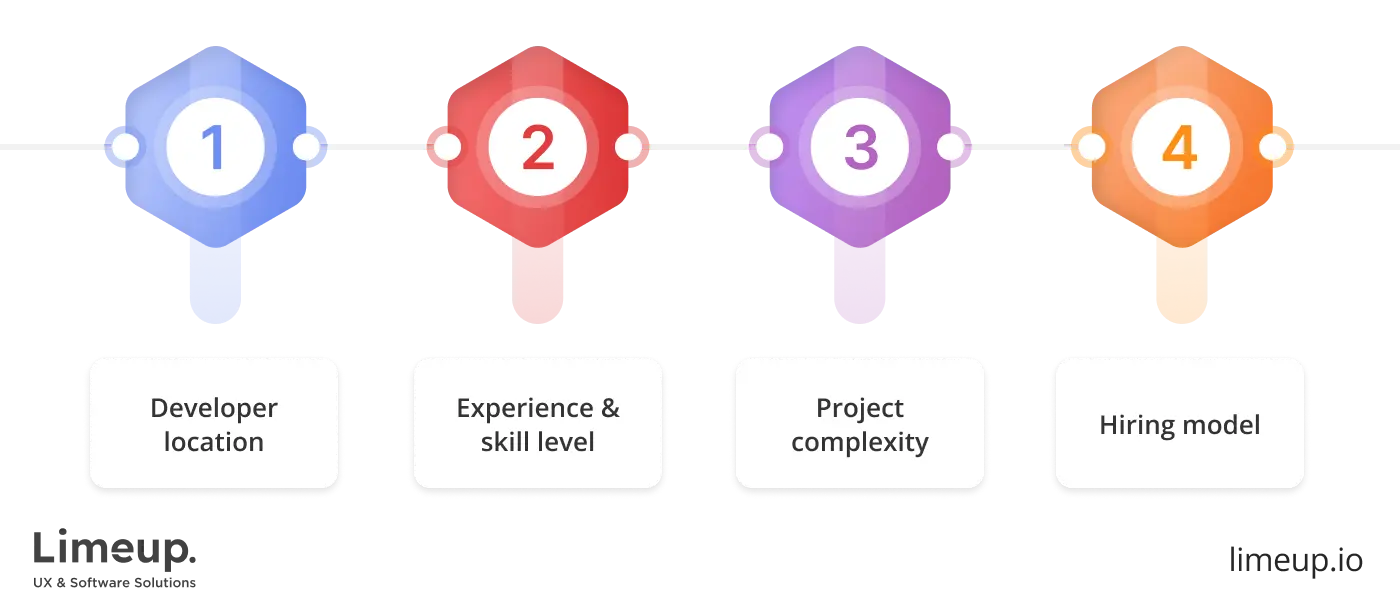
If you decide to hire mobile app designers and programmers separately, we recommend defining the budget before actually starting to look for a provider. If your choice is outsourcing, you can review hourly rates.
Here, we will consider the average cost you may pay for such a project:
| Type | ~$ | Features |
| Basic app | $5,000–$9,999 | Real-time GPS, simple dashboard with essentials, one payment integration, common UI. |
| Mid-sized | $10,000–$19,000 | Advanced tracking through GPS with AI-powered optimization, enhanced analytics and visualization on the admin dashboard. |
| Advanced | $20,000–$50,000+ | Robust artificial intelligence functions for predictive analytics and control, secure gateways, and more. |
The essential factors of logistic app development that we didn’t mention at the beginning but considered a few times are, first of all, the operation system or both, technologies, since cloud services and real-tracking tools can cost more, and the work approach you choose.
Talking about the rates across coders from different countries, you can expect to pay around $50 in Europe and $100 in the USA, while Asia-based experts charge less.
How to select a logistics app development company?
Logistics application development is an unmatched sector that requires specific knowledge so you need a provider who can estimate what’s happening under the hood of the transportation niche and related solutions.
Cooperation with an IT supplier is a cream-of-the-crop way to accomplish even the most challenging project, so if this is your way, here are some tips on how to choose a reliable transportation and logistics app development services contractor:
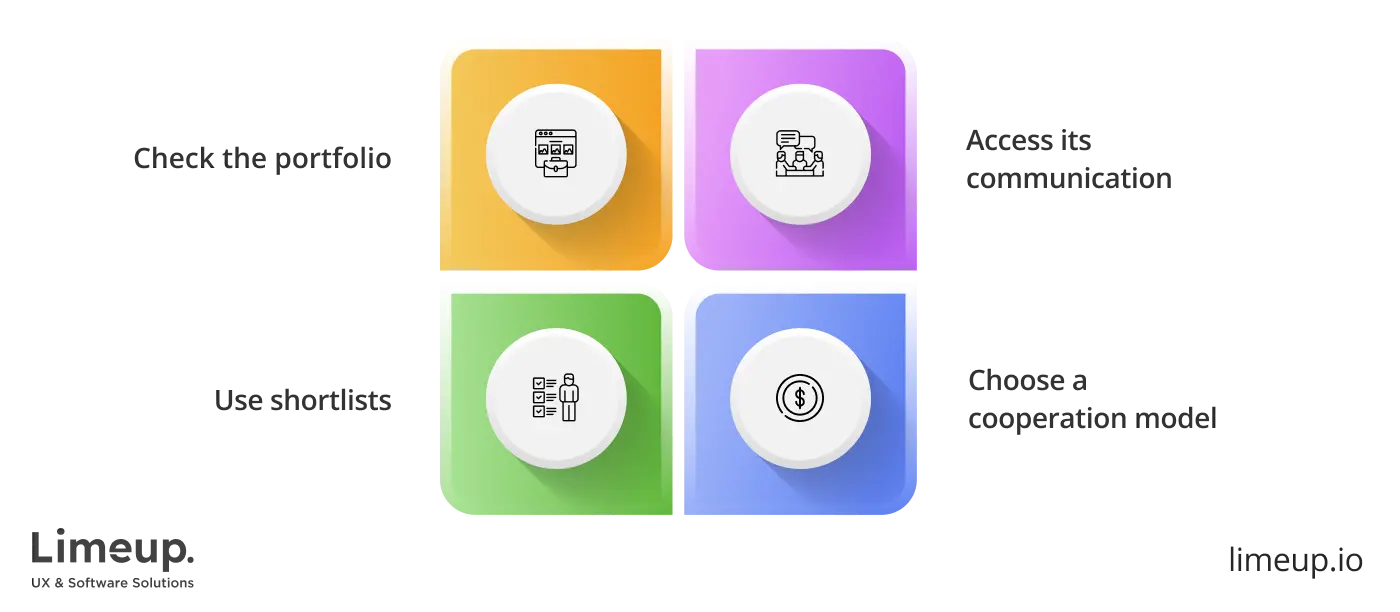
Check the portfolio to ensure it can handle similar applications that you need, moreover, case studies usually constrain testimonials and short or detailed reviews of key results from the customer, so you can do both.
Use shortlists. There are lists of software houses online, pre-vetted by experts and CEOs, for example, you can overview our material about a logistics app development company which are aimed at specific locations. Additionally, there is information about hourly rates, selection process, and other nuances.
Access its communication. Our specialists always emphasize the importance of remaining on the same page with an agency or a team of developers because such a collaboration may last for months and your vibe is essential.
Choose a cooperation model. You may need just a dedicated team that will cover your needs, or a flexible one if your requirements are ever-evolving or can’t be fully predicted. Typically, companies post it on their websites in the section “About us,” but you can ask this and other questions during an initial call, which is free in most cases.
Finally, we recommend a well-through-out interview and pre-selection of top-tier tech partners that will help you to investigate their capabilities and ensure you will match in objectives, work approach, deadlines, and other points.
Wrapping up
With this information to go, you are able to receive or build a logistics app development solution that will benefit a few aspects of your business, from real-time tracking for products to GPS-based tools for shipments, scalability in the delivery network, better customer service, and retention rate, and more, according to your objectives.
Reinforcing all that being said, you are aware of the creation process that takes from a few months to years, depending on your firm’s scale, how the final price is formed, how to select a provider who fulfills your needs, and what technologies to use for a comprehensive assignment.
Whether you are looking to reinforce an existing application or develop one from scratch, Limeup is here to help you. Contact us to schedule a free call, and we will discuss your custom needs.

